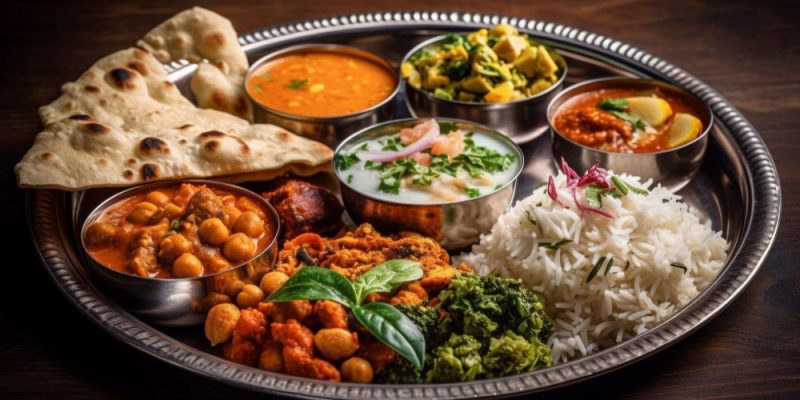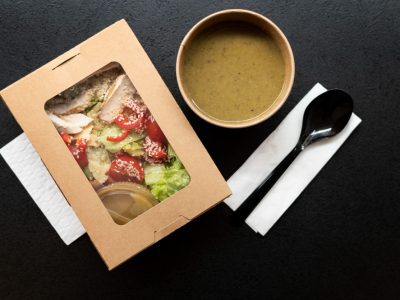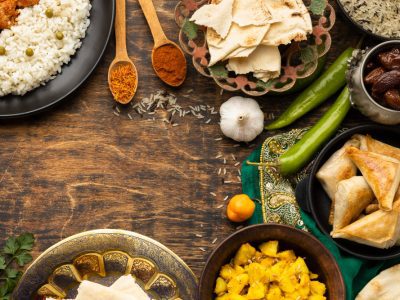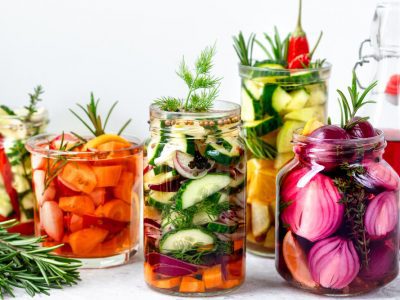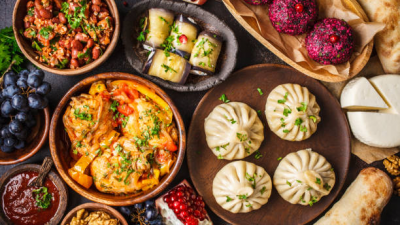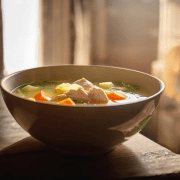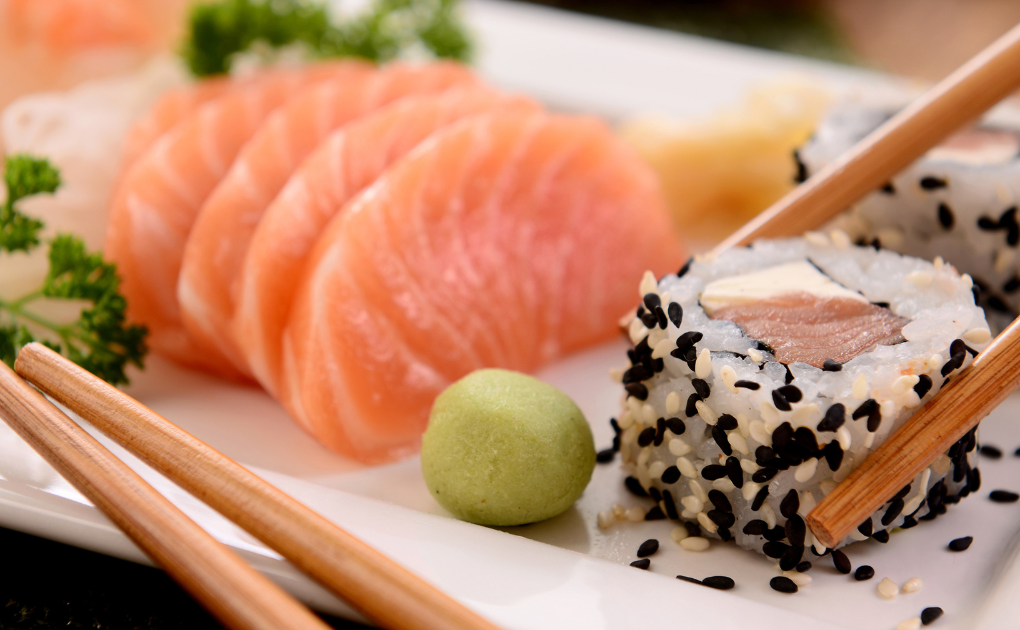South Indian vegetarian food has a rich history of veneration in India’s culinary canon, thanks to the rich tapestry of flavours, customs, and cultural importance it provides. Traditions in this cuisine date back centuries and attest to the region’s commitment to frugality, harmony, and wellness. The cultural and religious ideals of Ayurveda, as well as Hinduism and Jainism’s ethical obligations, have impacted the development of these foods and the way they are eaten. Thanks to this tradition, vegetarian South Indian cuisine is still enjoyed on a regular basis and is even revered as an art form during special occasions and as offerings in temples.
Essential components of vegetarian South Indian cuisine include rice, lentils, spices, and seasonal vegetables, all of which were abundantly cultivated in the lush soils and pleasant climate of southern India in the past. Early settlers found that using locally grown foods with indigenous spices like curry leaves, tamarind, mustard seeds, and curry powder made for healthy and delicious meals. Various cooking methods have been preserved through the years, allowing for a repertory of dishes that spans from the most basic and rustic to the most complex and spicy.
As a result of cultural interchange along trade routes, the local diet was also enhanced by the introduction of new ingredients and culinary techniques. Vegetarian South Indian cuisine maintained its unique flavour profile while absorbing new ingredients and techniques, likely as a result of movement of populations or the impact of old trade partners. You can taste the symphony of tradition and modernity in every bite, from the light idlis and crisp dosas to the robust sambar and sour rasam. These recipes are still loved today for their delicious flavour and because they represent a way of life that is healthy, sustainable, and respectful of nature. There is a history of vegetarian South Indian cuisine, regional pride, and tradition in every mouthful.
A Guide of the Must-Try Dishes in the Vegetarian South Indian Cuisine
The vegetarian cuisine of South India is known for its extensive menu of mouth-watering delicacies. This cookbook will take you on a tour of some of the most famous meals while also introducing you to contemporary takes on plant-based South Indian food, perfect for fans of the cuisine and those who are just discovering it.
Vegetarian Dishes
Vegetarian South Indian cuisine is based on a variety of popular dishes that have come to represent the area.
- Idli & Medu Vada: A scrumptious and filling dish can be made by steaming idlis, which are fermented rice cakes, and serving them with crisp, golden medu vadas, which are lentil fritters. Traditional accompaniments for these meals include a strong sambar and a variety of chutneys, such as coconut, tomato, or mint.
- Dosas: The dosa’s adaptability in the kitchen is on full display in all its forms. Whether you choose the traditional plain dosa, a spiced masala dosa loaded with potato combination, or a regional variation such as rava dosa made from semolina or ragi dosa made from finger millet, each of these varieties adds its own distinct texture and flavour to the dish.
- Uttapam & Upma: An excellent substitute for crepes is uttapams, which are thick and savoury and packed with tomatoes, onions, and chillies. Upma, a healthy morning porridge made with semolina and flavoured with curry leaves and mustard seeds, goes well with these.
- Pongal & Bisi Bele Bath: Pongal, a rice and lentil dish with a creamy texture and a subtle spice flavour, or Bisi Bele Bath, a mixed rice dish with aromatic spices, veggies, and a tangy kick, are both hearty and comforting options.
- Appam & Puttu: Traditional dishes from Kerala include appams, which are delicate pancakes made of rice with a soft centre, and puttu, which are cylindrical shapes filled with milled rice and shredded coconut and cooked in a steam oven.
- Pesarattu & Adai: Pesarattu, a green gram pancake, and adai, a spicy, mixed lentil pancake, are vegetarian South Indian dishes that delve into Andhra roots and provide protein-packed, light, and fulfilling options.
- Sundal & Poriyal: A perfect example of the harmonious blend of flavours that characterises this cuisine is the stir-fried vegetable dish poriyal, which is seasoned with mustard seeds and coconut, and the spiced and sautéed lentil dish sundal, which is often eaten as a side dish or snack.
No matter how basic or complex a meal is, it always showcases the creativity of South Indian cuisine. Saravana Bhavan, Murugan Idli Shop, Sangeetha, and the famous MTR (Mavalli Tiffin Room) are just a few of the authentic South Indian eateries that have gained international praise for serving vegetarian specialities.
South Indian Thali
Vegetarian South Indian cuisine is rich and varied, and a South Indian thali is more than simply food; it is an experience in and of itself. The components of a classic thali:
- Steamed Rice & Lentils: The backbone of the dish, providing nourishment and solace.
- Sambar & Rasam: Not only do these spicy, acidic soups go well with rice, but they also make digestion easier.
- Assorted Vegetable Curries: These curries are a healthy and colourful way to enjoy seasonal ingredients.
- Chutneys & Pickles: These condiments offer an extra kick, with flavours ranging from tomato-based to coconut-based.
- Papad & Salads: Salads and light, crispy papads provide a tactile contrast to the heavy curries.
- Sweets like Payasam or Kesari: For a delicious finish, a little dessert.
The thali is a symbol of vegetarian South Indian cuisine because each ingredient has been thoughtfully selected to create a harmonious blend of flavours while also providing balanced nourishment.
Plant-Based South Indian Cuisine
Chefs have been influenced by modern culinary trends to rethink classic dishes, creating new plant-based versions that nonetheless retain the traditional flavours of vegetarian South Indian cuisine.
- Quinoa Idli & Millet Dosas: These recipes are perfect for anyone watching their weight since they use healthier alternatives to rice, such as quinoa or millets, without sacrificing flavour.
- Fusion Uttapams: Fusion uttapams are a fun way to spruce up the traditional South Indian dish by adding healthy ingredients like avocado, kale, or spinach.
- Deconstructed Thalis: Modern, artistic thalis presentations are becoming common in fine dining establishments, with chefs reimagining each component to improve presentation without sacrificing the authenticity of flavour.
- Innovative Sambar: While many modern sambar recipes pay homage to the soup’s traditional tanginess, others take culinary risks by including seasonal vegetables or legumes.
This pioneering attitude keeps vegetarian South Indian cuisine fresh and exciting, drawing in vegetarians and vegans who value both tradition and innovation.
Conclusion
A vegetarian’s exploration of South Indian cuisine is an ode to tradition, creativity, and the past. Based on what we have seen, this cuisine is more than just a set of recipes; it is an art form that has evolved through the years while staying faithful to its origins. The recipes here are a testament to the ardent skill of cooks who have passed their skills down through many generations, as well as to the bounty of the land. Every plate tells a different story, from the simple idli to the ornate South Indian thali, and each one shows how nutrition and flavour can coexist.
Vegetarian South Indian cuisine is fundamentally an ode to the region’s rich biodiversity, vibrant culture, and abundant natural resources, rather than merely a means of subsistence. The recipes featured in this cookbook are a tribute to the creativity and inventiveness of South Indian chefs who, with minimal ingredients, have produced tasty and nutritious food. For instance, the fermentation process is both a culinary technique and a nod to the science of making probiotic-rich, easily digestible food. This is evident in dishes like dosas and idlis.
As more and more people discover the health benefits of a vegetarian diet, the flavourful cuisine of South India has made its way into kitchens all around the world. Vegetarian South Indian cuisine has a long and storied history, and each bite—whether it is the savoury sambar or the crunchy dosa—reminds us of that legacy. This heritage is kept alive and well by modern plant-based developments, which satisfy both traditionalists and modern diners.
Vegetarian South Indian cuisine is an example of cultural authenticity, sustainability, and good health in a world where food trends come and go. By adopting this cuisine, one can immerse oneself in a remarkable sensory experience while also honouring a long-standing tradition that prioritises ethical eating, balanced flavours, and natural ingredients. A rich tapestry of history, community, and an enduring dedication to excellence is the foundation of vegetarian South Indian cuisine. We can see that this culinary heritage will keep on giving us ideas and joy as we go forward and that we will all be invited to discover the incredible tastes and stories in each bite.
As you delve into the vegetarian cuisine of South India, may each dish provide as much joy to your taste buds and soul as it did to the people of South India throughout history.
A food enthusiast and a blogger – someone who likes to eat and write about it. I’m passionate about exploring different cuisines and challenging my palette. I give into my food craving regularly and am often on the hunt to find my new favorite food place in town.
